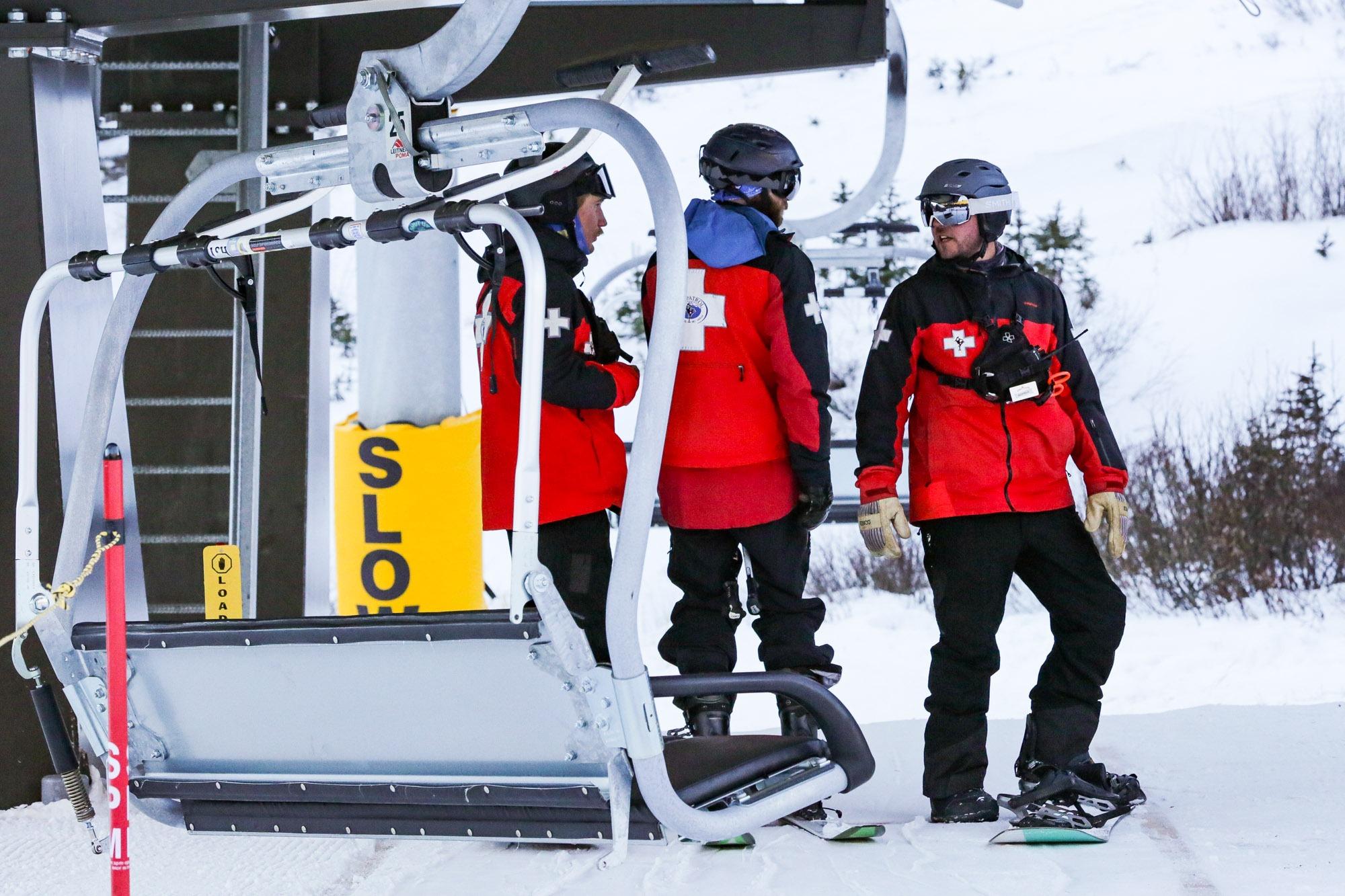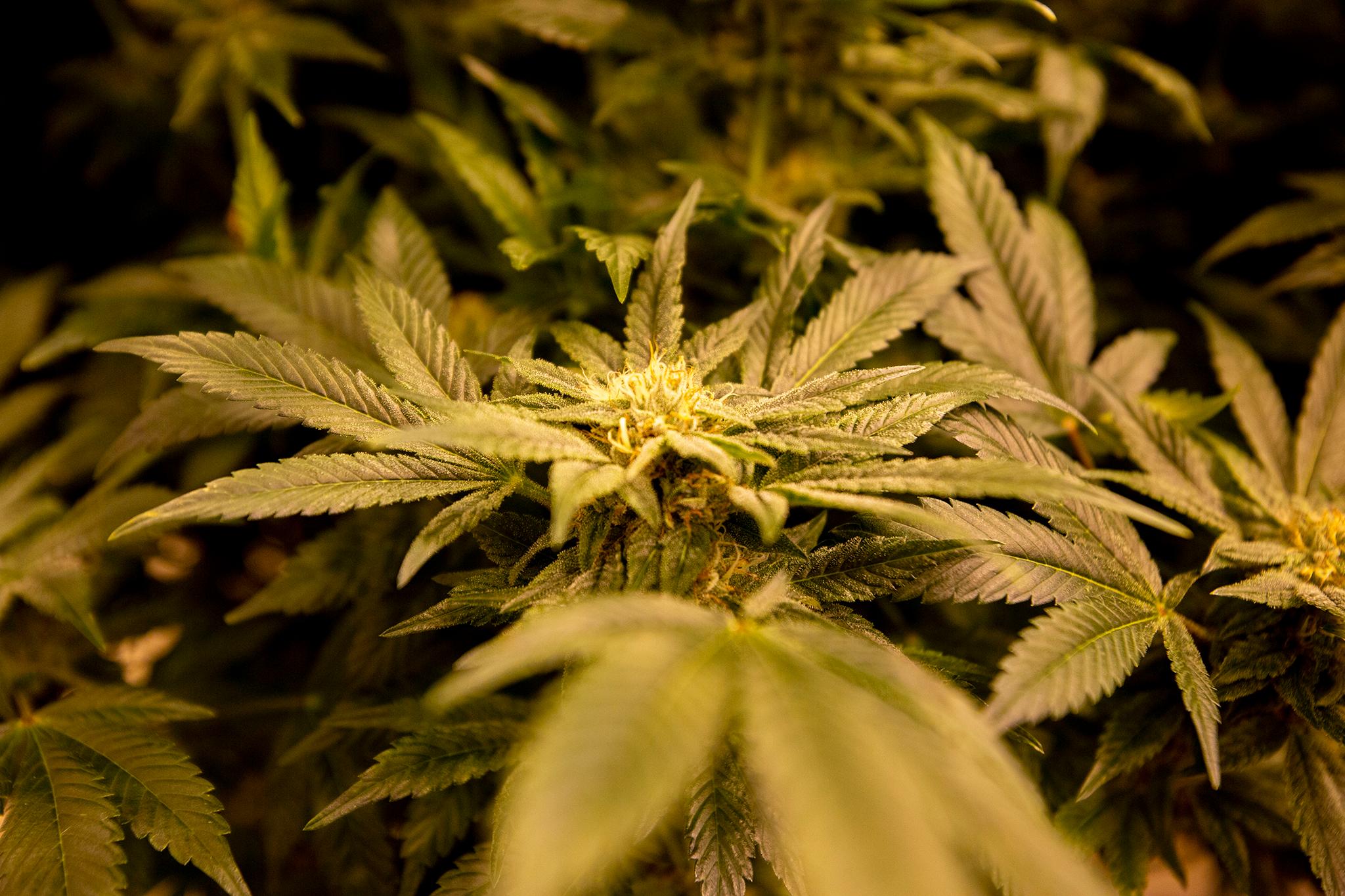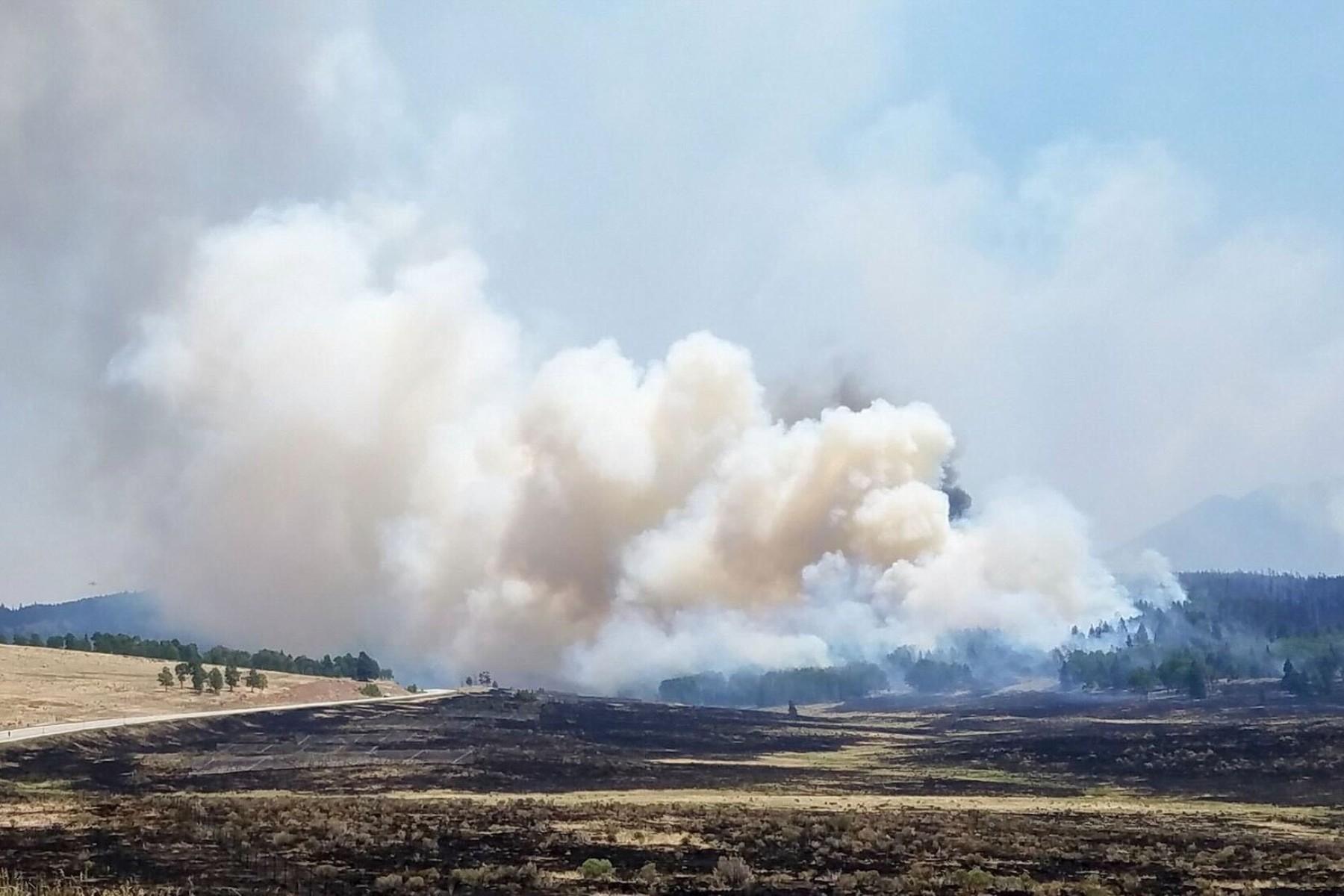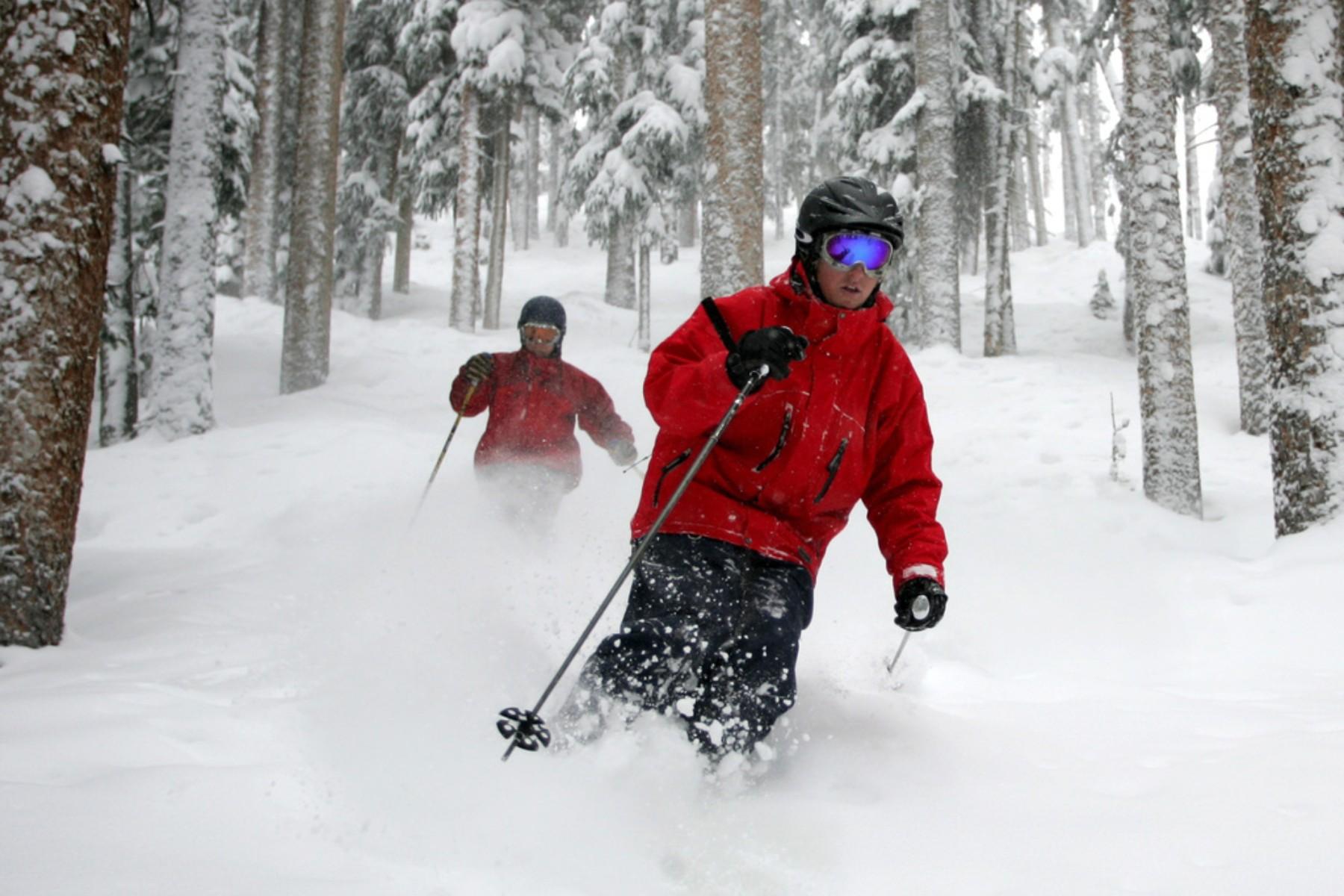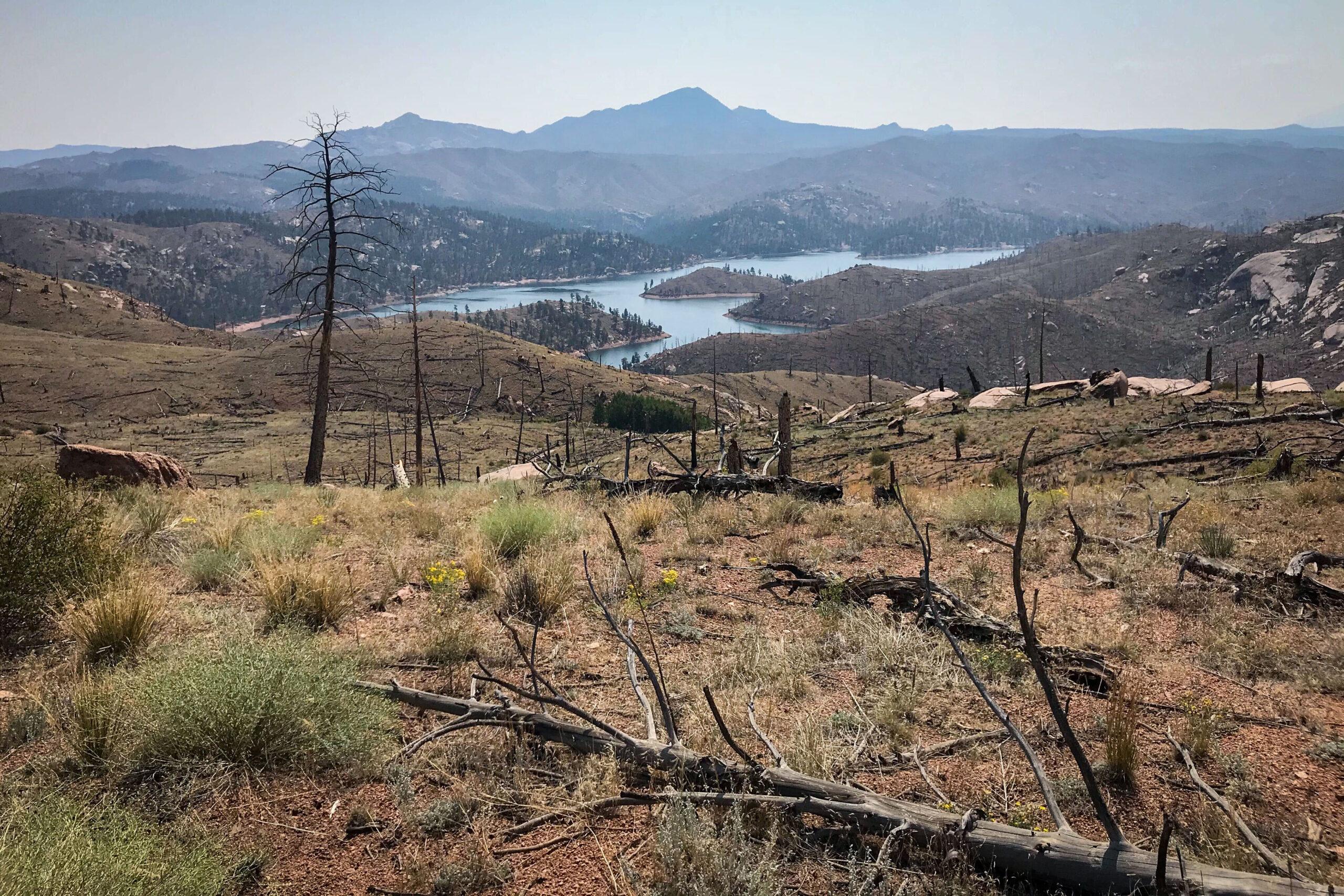
After a quick hike off a steep dirt road last week, away from any trails, Marin Chambers was right where she needed to be — in the middle of a large, high severity burn patch from the 2002 Hayman forest fire, northwest of Colorado Springs.
Dead and fallen trees surrounded Chambers, a research associate with the Colorado Forest Restoration Institute at Colorado State University. The fast-moving flames of the Hayman fire charred more acreage than any other wildfire in state history at the time. It’s now second to the Pine Gulch fire, still ablaze north of Grand Junction.
Nearly 20 years later, the burn patch Chambers stood in seemed to be missing something: Where were the new trees?
She and others have found in their research on places like this that Colorado’s forests are struggling to grow back some of the state’s most iconic species, like ponderosa pine and Douglas fir, particularly in lower elevations. Baby trees don’t thrive in increased heat and drought brought on by climate change, combined with larger, high-severity fires.
The result, then, decades after a wildfire, is that the landscapes are transformed, perhaps never again to be covered in a lush forest.
This patch of 18-square miles burned hot and fast in a single day during the Hayman fire, driven by high winds, drought and an unnaturally dense forest caused by fire suppression. After the flames came through, almost no living trees were left.
Taking the long view, comparing it to decades past, Chambers said, “It’s pretty unprecedented in the historical record, or at least what we understand wildfires to have done in the past in this kind of vegetation.”
To get new trees, seeds need to drop and take root, and that’s tough on scorched ground.
A lower intensity wildfire would have left behind some living trees, scattered through the acres. Those trees would drop seeds, and a forest would regenerate. High-severity fires instead leave behind massive burn areas with almost nothing alive. The tree seeds can’t travel much past the edge of the vast burn scar. If there is forest regeneration, it occurs in bands along the surviving forest edge where seeds drop close by.
“In this fire and in other fires in the Front Range of Colorado, the seeds from surviving trees don’t travel very far from their parent trees,” Chambers said. “So especially, the middle of these very high-severity burn areas where lots of the surviving trees are a really far distance from the middle of those patches, we’re likely not going to see tree regeneration occurring.”
- Colorado Wildfires Are Climate Change ‘In The Here And Now’ — And A Sign Of Summers To Come
- After The Grizzly Creek Wildfire Burns Through Glenwood Canyon, A Look At What Remains
- What Happens When Wildfire Smoke Meets Coronavirus? Here’s What Scientists Know
- Nearly Three-Fourths Of Colorado Is Seeing Severe Drought, And There’s A Lot Of Reasons Why
At least not in the short term, Chambers said, and “Even if a seed can get out into this area, the kind of harshness of these sites I think is really influencing whether or not those seedlings are actually able to germinate.”
The heat and lack of moisture at lower elevations makes it hard for a baby tree to survive its first few years.
Some trees, like aspen and oak, do better with regrowth after a fire. Camille Stevens-Rumann, a fire ecologist and assistant professor at Colorado State University, said lodgepole pine forests, like what’s burning in the Cameron Peak Fire north of Rocky Mountain National Park, also have been found to recover better than some lower-elevation trees. Fire actually makes their cones open to drop seeds.
But widespread damage from bark beetles might add a layer of complexity. Stevens-Rumann calls these “repeated disturbances.”
“If you have fire on top of fire, if you have bark beetles and then fire, your recovery pathways might be really different,” she said.
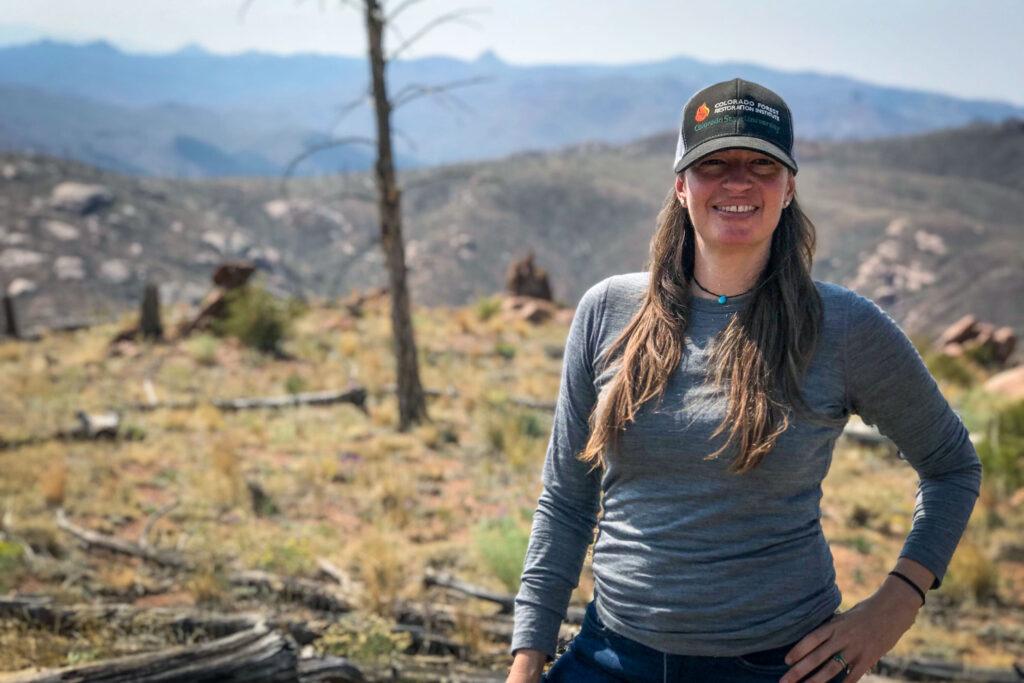
Without trees, it’s hard to capture carbon, which is a key part of slowing climate change.
The obstacles to reseeding are one reason an area like the one Chambers stood in last week might never reforest. Research has found that instead, it could convert to grassland.
Stevens-Rumann has studied tree regeneration in burned areas for 10 years. She said there can actually be lots of benefits to having gaps of grasslands between forested areas. But that’s not what the burn scar at the site of the Hayman Fire is.
“I think what we are really sad to see is when we have those huge expanses that like maybe you see on the Hayman fire, where we’re talking about tens of thousands of acres that have transitioned from forests to grasslands,” she said.
Stevens-Rumann has studied a large range of burned forests across the West, and has found “a lot of areas are not able to support the same trees that have been there over 100 or 200 years.”
“We’re really moving away from the suitable climate for tree regeneration to happen,” Stevens-Rumann said.
One big concern with these ecosystem transitions is that trees sequester carbon. Fewer trees mean less sequestered carbon, which means more warming, and therefore fewer trees, in a cycle that will make it very hard to reach carbon neutrality.
“When you aggregate all of the burned areas over half the continent of North America, for example, that turns out to be a source of considerable concern,” said Thomas Veblen, a professor at the University of Colorado Boulder who has researched forest ecology and fire recovery for four decades.
As warming conditions continue to drive the conversion of forests to non-forests, Veblen said, “It’s going to be an important question for our society and for our vegetation managers to resolve in terms of how much resources we want to put into trying to encourage the recovery of forests.”
He said that’s an issue with tree replanting efforts touted as a way to combat climate change.
“Trees need moisture to survive, and they simply are not going to be surviving in the many, many places where we would like to have them planted and sequestering carbon,” Veblen said.
Stevens-Rumann got into this work because she “loves forests and being in the trees.” She’s sad to already be seeing the effects of climate change, and said that reality is “something that continues to surprise many researchers.”
“This isn’t something that we are looking down the road as a possibility, we’re not modeling these changes. These are changes that are happening right now,” she said. “Our ecosystems are changing, and we’re watching that in real time.”
She wants to emphasize that Colorado is not losing all of its forests. She said it can sound dire, but many places do still have abundant tree regeneration, mostly at higher elevations where temperatures are cooler and there’s more moisture. Or maybe another tree species moves in because it can handle the hotter, dryer conditions.
“And that gives me hope for these landscapes,” she said. “And I think part of what we all have to accept in this new and changing world is that these ecosystems are going to look different than the ones that maybe we have grown fond of in the past.”
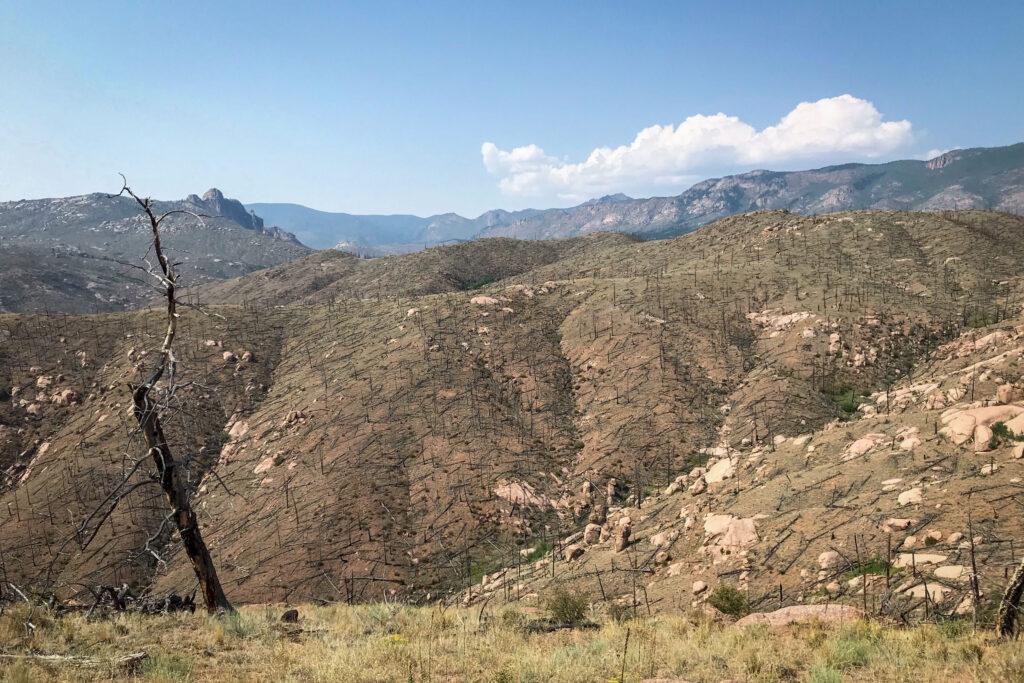
The reality is, the forests we recognize might not exist at lower elevations in the future.
A new University of Colorado Boulder-lead study found that a large percentage of the Southern Rocky Mountains will become unsuitable for ponderosa pine and Douglas fir tree regrowth as the climate continues to warm. Kyle Rodman, the lead author, and his team counted the number of trees regrowing across more than 20 different wildfires regions, to see what places are recovering well and what places are not.
They found a stark dividing line, starting with the burn site of the 2000 Walker Ranch Fire near Boulder, where there has been very little regrowth in the forest.
Soon after the fire, Rodman said, in 2002, “was one of the driest years we’ve had in the past century or more. So any seedlings that might have established right after the fire, there’s a good chance they would have been cooked in that drought.”
Walker Ranch was part of a trend: Rodman’s team found that lower elevation forests, like those south of Pueblo and in portions of the Front Range foothills, have lacked resilience and the ability to regrow. Generally, they found, forests at higher elevations with lower temperatures and more precipitation have done better.
That wasn’t always the case. Veblen worked with Rodman on his study, and in his own research using tree rings, Veblen has created timelines of when fires have happened and how quickly new trees regrow.
His work has found that historically, before 2000, “there was quite immediate regeneration of Douglas fir and ponderosa pine.” That’s not true of the past 15-20 years, when at lower elevations, “following a fire, a significant position of the landscape is not regenerating.”
Rodman said the year 2000 was a point “where the climate shifted pretty dramatically.”
Rodman said one big implication of losing forests is also losing protections for reservoirs.
“We get a lot of water from reservoirs, and those reservoirs tend to be in places that are forested watersheds. So if a watershed burns, and the trees and vegetation aren’t there to hold the soil back anymore, it’s very easy for that soil to wash into the reservoirs,” Rodman said. “That’s very, very expensive to clean out and to try and keep the soil from moving. The trees do such a good job of it when they’re there, that to try and replace that service is almost impossible.”
Whether motivated by expensive reservoir clean-ups or a lack of low-elevation forests to enjoy on a hike, Veblen hopes that when people walk around burn areas of fires that occurred many years ago and see no new trees, that they “stop and think about well, this is due to warming temperatures, and the underlying cause for this is carbon emissions.”
“To resolve the problem, we need to be confronting carbon emissions and the impact on our climate,” he said. “We should expect to have to walk to higher elevations if we want to walk under a forest canopy in the very near future.”

